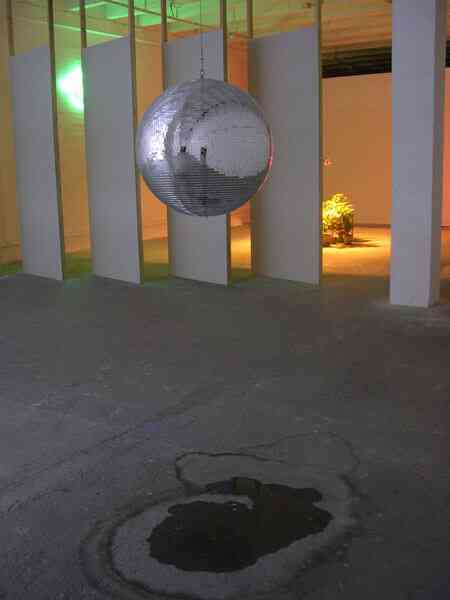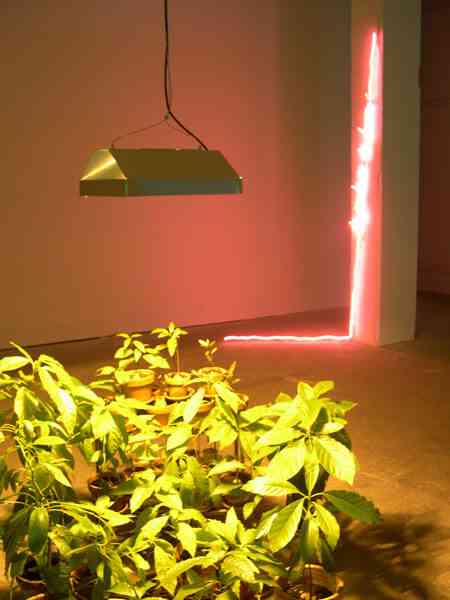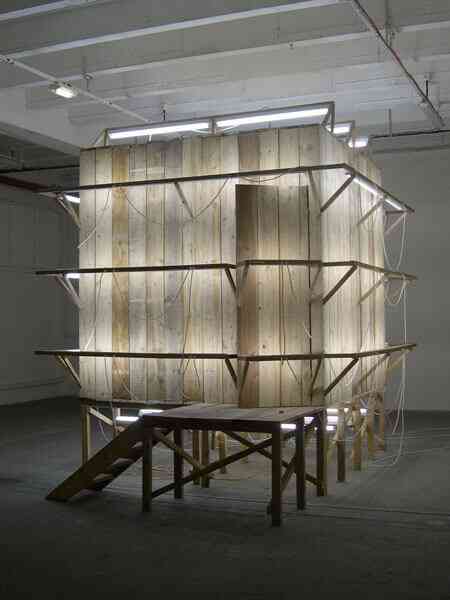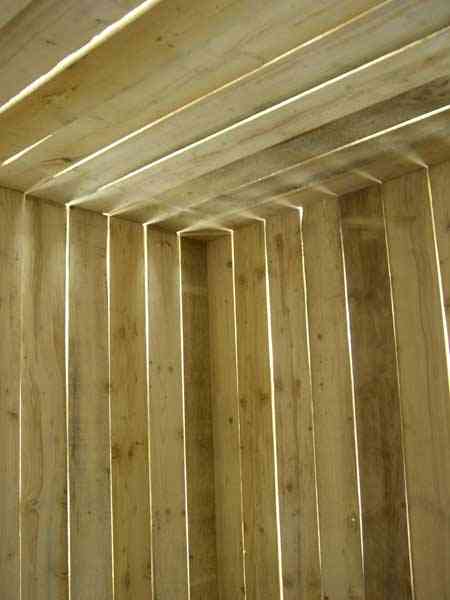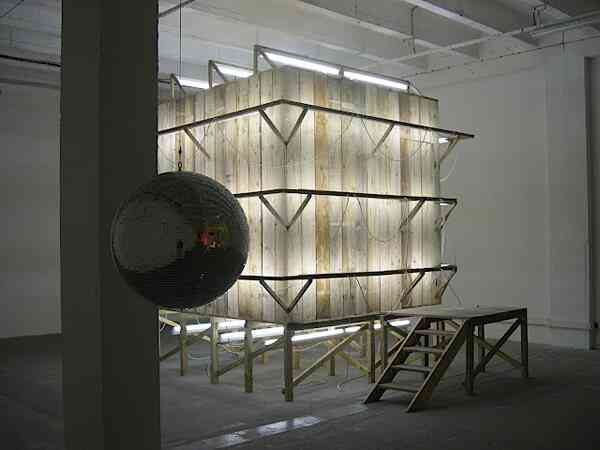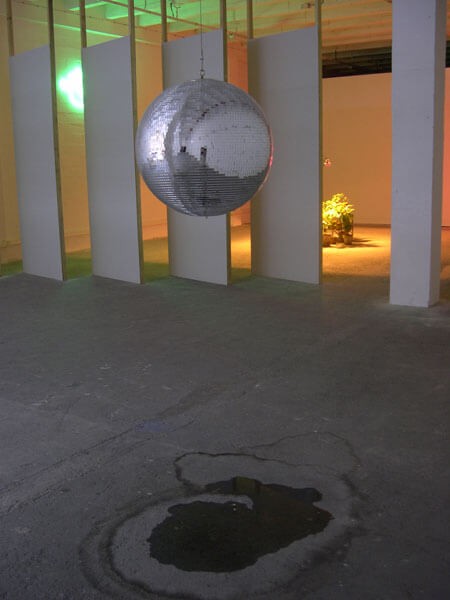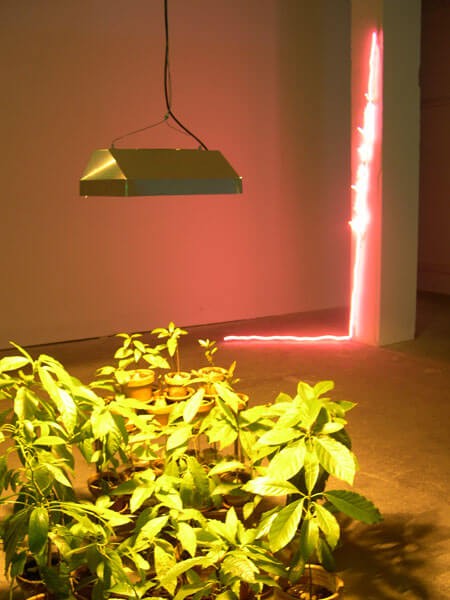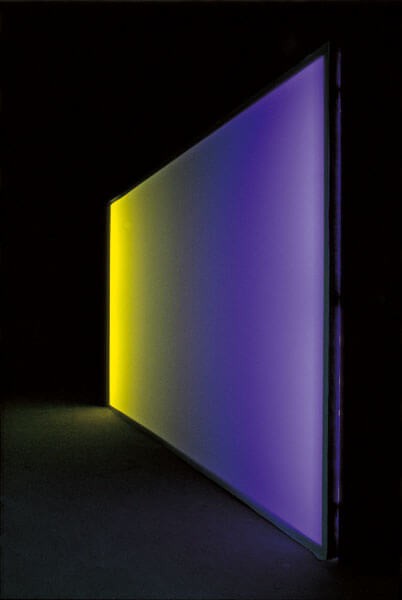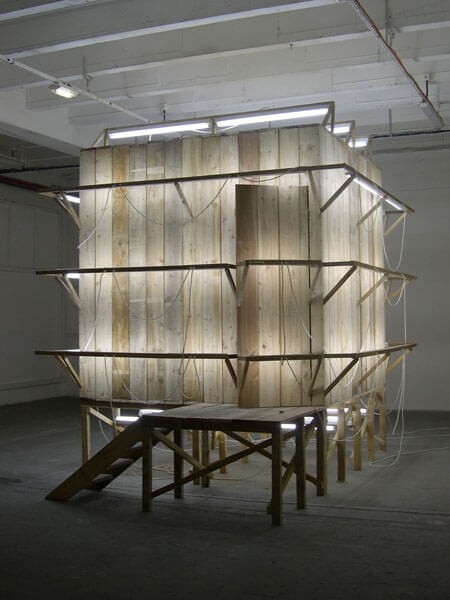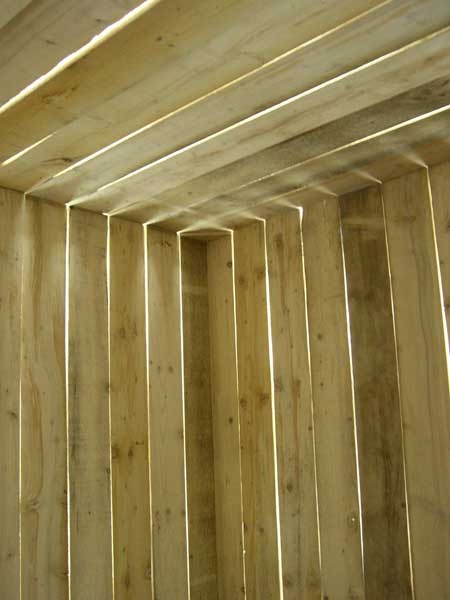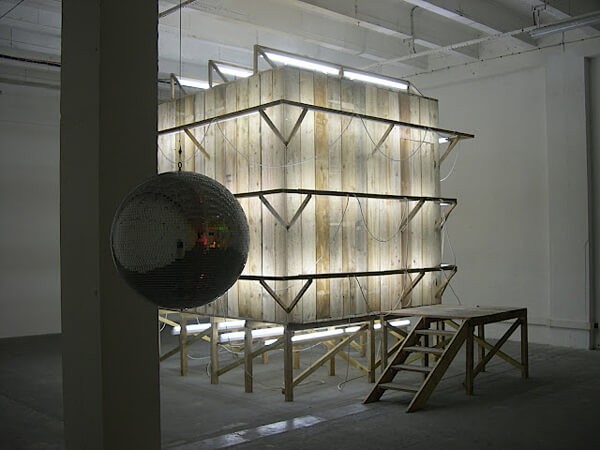Pierre Malphettes
Solo show by Pierre Malphettes
May, 2003
Friche la Belle de Mai, 13003 Marseille
Pierre Malphettes’s work is like one of his own pieces—it acts on us like a strange attractor. Working primarily with intangible materials such as air, light, and water, as well as raw or construction materials (tarpaulin, grating), Malphettes materializes mental spaces that evoke travel and journey. The poetry arises from a frustrated, impossible, even inconceivable movement: a cross-shaped, too-small ladder, and thus impossible to climb (“Les échelles et leurs potentiels”, 1997); a floor that gives way beneath our feet (“Haut, Bas, une expansion”, 1997); a map of Paris where only one-way streets remain (“Paris sens unique”, 2000). All this forms the astonishing grammar of an artist who, through an apparent economy of means, invites us to “cross the impossible.”
These works tend to render notions of inside and outside, top and bottom, solid and ephemeral, either useless—or at least fragmentary. If the center is in a constant state of seismic upheaval, and if the notions of fixed landmarks, stability, and solid matter give way to reversibility, displacement, and transience (“impermanence,” as the artist puts it), the result is a general indeterminacy and a loss of bearings—experienced here through experimentation and elation.
At the origin of Pierre Malphettes’s work there is always a kind of “what if,” a childlike dream: what if my carpet could fly? what if the ground lifted off? what if plastic bags spun endlessly like goldfish in a bowl? Malphettes draws us into his impossible dreams—and the struggle to realize them (but realize what? now that’s not the point…). To appropriate the world in this way is to bring the world into the room, to propose an intimate architecture that upends all our familiar bearings.
The works and exhibition design presented at La Friche la Belle de Mai fully embrace this omnipresent idea, one already embedded in Malphettes’s practice. “Le festin,” one of the works presented at La Friche, is a striking example. Until now, Malphettes undertook his imaginary journeys alone. For the first time, he conceived, desired, and realized a collective journey. Of course, the “collective” isn’t just anyone—it’s his friends, who became actors, videographers, and photographers for the occasion. The journey? To find a sideboard, fill it with the finest dishes, pour care into every detail, all with the knowledge that everything prepared for this “feast”—all the time and attention—would be destroyed in a final, collective, jubilant gesture.
Along the way, the viewer may wander through “Le jardin,” but in a domestic, urban version—like the ones cherished by children and grandmothers alike—a slightly absurd garden, one that doesn’t face vast open spaces but dreams of them at night in bed. Here, step into the “Light Cube House,” a wooden hut clad in neon tubes, like a magical escape from some childhood forest. There, a crying disco ball with the evocative title: “le bal est fini” (“the party’s over”). This work isn’t nostalgic or melancholic—it leaves a mark on our imagination precisely because of its minimal means (a crying disco ball, nothing more).
With a collection of mostly self-illuminated works and a scenography that favors wandering, Pierre Malphettes offers us a time and a space—much more than a mere succession of images. The artist does not seek to dazzle us with virtuosity. Instead, by letting us glimpse behind the scenes, he allows us to witness, almost by accident, the secret mechanisms of his visual poetry.
Sandra Patron, excerpt from the press release
